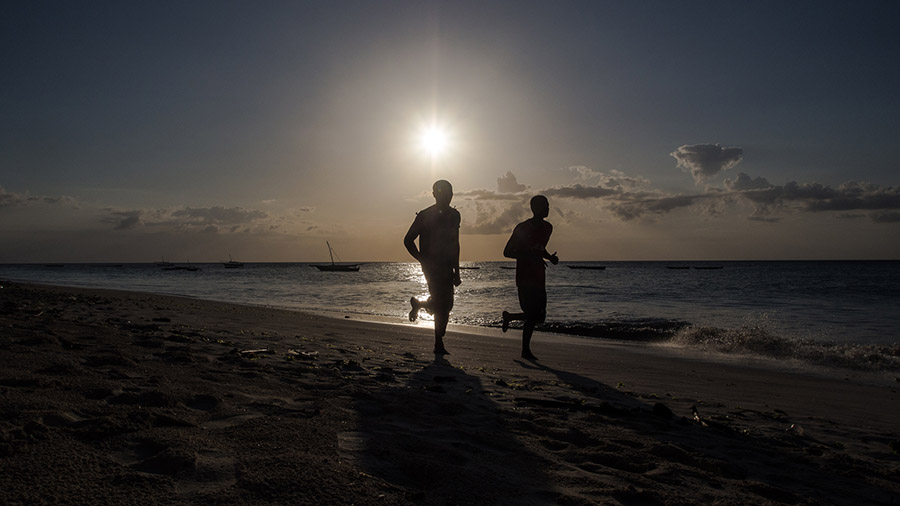5 Tips for Beach Running
Have a more enjoyable run in the sun, surf, and sand
If you a visit the beach when the weather is agreeable for a workout, you will likely be tempted to run on the sand. However, be warned that there several pitfalls worth avoiding if you've never done this before. Here are five essential tips for running on the beach — many of which I learned the hard way:
1) Be careful about running barefoot
You may be tempted to leave your running shoes behind, in order to feel the sand moving beneath your feet. Just be aware that unless your feet are calloused and tough, grinding through the sand for an extended period of time is going to irritate your skin.
On my first beach run, my feet started to ache after about 3k, so I turned around to run back, making it a 6k effort. By the end I had four painful blisters on my toes. Standing and walking were noticeably less enjoyable for the next few days. I would have been much better off running with footware after the first ten minutes.

Photo: Georgie Pauwels
2) Expect a harder workout
Moving through the sand is a lot more work than running on the pavement or a hard-packed trail. This is especially true if you choose to run through soft sand, as opposed to the wet stuff near the surf. Regardless, expect a more intense workout when you run on the beach. It will be harder on your legs than usual, but, the extra effort can help you build up strength.
3) Wear proper running clothes
If you're at the beach, there's a good chance you'll be wearing a swimsuit. This is not what you want to wear for your beach run. Chafing is a real thing, and it hurts. Keep your body sting-free by wearing proper running attire.
4) Protect yourself from the sun
NEWSFLASH: The sun is a major factor at the beach. Consider wearing a hat or a visor. Use generous amounts of sweat-resistant sun block over any exposed skin. If you're a redhead like me, use SPF 50 or higher, and slather it on until you look like the top of a buttercream cupcake.
5) Track it!
Running on the beach is an excellent opportunity to test the elevation data from your tracking devices, so be sure to bring your GPS watch, or your phone with a good fitness tracking app.
On my beach run, my Garmin 220 recorded an unsteady elevation. I later analyzed the workout in SportTracks and used its built-in elevation correction, and got a proper reading of 0 elevation. The difference in my workout data was pretty dramatic.
More tips...
If you have a heart rate monitor, wear it. It's interesting to see how a more demanding beach workout impacts your HR. Watch out for little kids. They ramble around the shoreline unpredictably. Be mindful not to kick up sand in the faces of other people. Lastly, if this is a summer beach run, treat yourself to a dip in the waves immediately after you cool down. It feels amazing!
| Article written by Sam Mallery, Director of Marketing, Zone Five Software Inc. |
